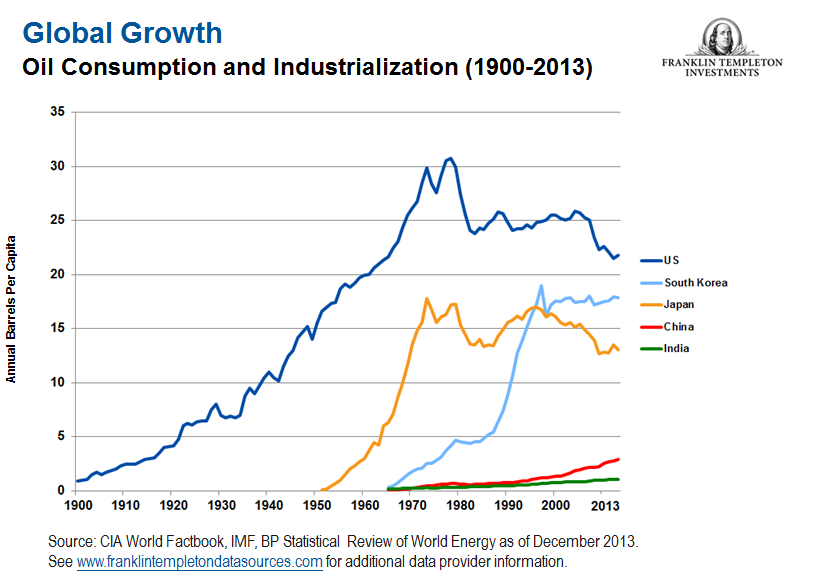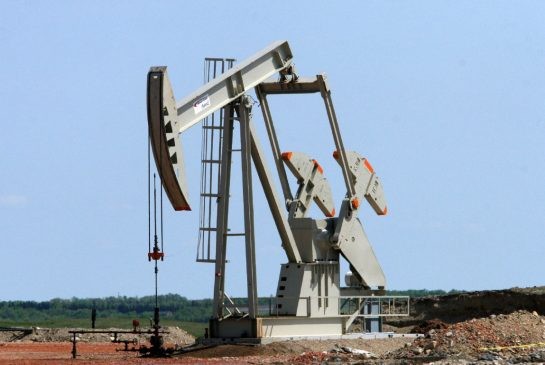Are Lower Oil Prices Here to Stay
Post on: 7 Июль, 2015 No Comment

When oil prices are skyrocketing, production and exploration efforts tend to ramp up to capture the potential riches, spawning a popular adage: “The cure for higher oil prices is higher oil prices.” But is the reverse of this adage true when prices are falling? Oil prices have taken a tumble in recent months due to a confluence of factors, but are lower prices here to stay, or a temporary phenomenon? And what opportunities, if any, might lower oil prices bring investors in the energy sector? Fred Fromm, vice president, research analyst and portfolio manager, Franklin Equity Group®, shares his views, and where he’s finding potential equity bargains amid the energy sector downturn.
Fred Fromm
Fred Fromm
Vice President, Research Analyst, Portfolio Manager
Franklin Equity Group®
In the past few weeks, crude oil has extended its biggest price slump since the 2007–2009 global financial crisis, dropping to the lowest levels since 2009 amid signs of softer demand growth from major economies, strong crude output from the United States and stable output from the rest of the world. 1 The supply and demand dynamics in the oil markets did not change overnight; this shift has been building for over a year. There are some extreme views circulating about where the price of oil is headed next and why, but from my point of view, the long-term demand fundamentals remain in place. Near term, we see mechanisms that appear to be in place to balance the markets, although low prices could persist for quite a while before production slows and supply/demand balances tighten. Given the oil price drop, stock valuations in the sector are appearing more attractive to us, as you would expect. We tend to be growth-oriented investors, which can lead us toward small- and mid-cap names in the sector. Some have been harder hit—but may also be presenting some of the good opportunities, in our view. While prices are generally more attractive, investors still need to be discerning in looking at potential opportunities. We think it’s very important to take a reasoned perspective on the sector, and have an active approach to reviewing potential long-term opportunities therein.
How We Got Here
Over the past year, North African and Middle Eastern production disruptions have made room for the United States and Saudi Arabia to add supply. Growth in the United States as a result of the application of hydraulic fracturing has been striking. By way of example, for many years, production in Texas was flat or down, but it is now up over 2.5 million barrels a day and has been growing rapidly. One of the oldest oil fields in the United States, the Permian Basin in Texas, is now contributing to that growth as a result of the application of new drilling technology. Most people are also aware of the Bakken oil field in North Dakota and the recent production boom there. Onshore oil deposits that were previously thought to be too difficult to produce are now being tapped with better drilling technology. Deepwater drilling activity has also increased and is contributing to supplies, although to a lesser degree.
As US production was increasing, Saudi Arabia also increased production to a record level to help offset the potential impact of supply disruptions from other producers. While the Saudis had stated they’d cut back to make room for Libyan production when it came back online, they didn’t follow through when it happened this year. There is a large amount of speculation as to the reason, but the net result was that excess capacity was built, masked somewhat by disruptions in the Middle East and Africa. Libya’s resumed production reached nearly one million barrels a day, and increases were also seen in Nigeria and Iraq. Places like Brazil and Kurdistan also started to see production growth. At the same time, slower economic growth in Europe and China, along with seasonal refinery maintenance, led to reduced demand.
Given this backdrop, it was surprising to some observers that the Organization of the Petroleum Exporting Countries (OPEC), which met on November 27, left its production target unchanged at 30 million barrels per day despite falling oil prices. 2 The cartel’s Persian Gulf member nations (Saudi Arabia, in particular) seemed to have become increasingly concerned with growing production from non-OPEC nations and the potential loss of market share. OPEC’s decision to maintain the existing quota appears to indicate that member nations believe lower prices will be required to moderate supply growth and balance the market.
The price of West Texas Intermediary crude has fallen below US$65 per barrel, and as of early December, was down more than 30% year-to-date. 3 As prices fall, drilling becomes less attractive for North American exploration and production companies, some of which may have to cut back extraction activities in less profitable oil fields until prices recover.
This has all led to investor angst. I think as an investor, you have to be careful to not be too influenced by overly negative press and sell-side reports and focus on conducting fundamental research. Energy market swings have tended to become more extreme, as investors with short-term horizons can overreact to news. As long-term investors in the energy sector, we have to be even more steadfast in our convictions and not be afraid to act in a contrarian manner.
A Look at the Fundamentals
Long term, the fundamentals for energy haven’t changed, in our view. For many years, economic growth has remained robust outside the member countries of the Organisation for Economic Co-operation and Development (OECD), which include the United States and much of Europe, and non-member countries or developing markets have been largely driving demand. While there are concerns about growth in some parts of the world, including China, even a slower growth rate in China (with expectations for 2015 GDP growth above 7%), 4 will likely still drive global demand higher.
We think the energy market will likely return to balance, but recognize the need for global demand to pick up. We would expect demand to likely pick up next year and beyond, in part, due to lower prices.
We have seen signs already that there are mechanisms at work to help balance the energy market. OPEC has shown more compliance in maintaining its 30 million barrels-a-day quota, and US exploration and production companies have made announcements of capital spending cuts. Accordingly, energy sector stocks seem likely to stabilize, even if oil prices go lower, but the timing is impossible to predict, and we can’t rule out further downside at this stage. We are being cautious about putting money to work in this environment, but we are looking to add incremental exposure to what we view as the highest-quality producers, and we maintain our exposure to companies that we think can make it through this difficult period.

No Universal “Break-Even” Oil Price Number
Various “break-even” oil production prices are often discussed to help determine a floor, but in our view, there really is no one price. Production costs vary by region, so a single production company can have widely disparate production costs; some wells may be profitable at US$50–$60 per barrel, but others may require US$70–$80. At current prices, we believe drilling efforts and production growth will likely shift to less expensive regions, but production growth should slow overall as the markets seek the supply/demand balance mentioned earlier. As long-term investors, rather than focus on the immediate direction of oil prices in the short term, we continue to seek investment opportunities in companies that we believe are positioned to perform well over the long term. We expect many exploration and production companies to continue to generate production growth even at lower spending levels, and we think current valuations are attractive. Given that more volatility is likely, we are taking a measured approach to making additional investments in the energy sector.
The comments, opinions and analyses are the personal views expressed by the investment manager and are intended to be for informational purposes and general interest only and should not be construed as individual investment advice or a recommendation or solicitation to buy, sell or hold any security or to adopt any investment strategy. It does not constitute legal or tax advice. The information provided in this material is rendered as at publication date and may change without notice, and it is not intended as a complete analysis of every material fact regarding any country, region, market or investment.
This information is intended for US residents only.
To get insights from Franklin Templeton delivered to your inbox, subscribe to the Beyond Bulls & Bears blog.
For timely investing tidbits, follow us on Twitter @FTI_US and on LinkedIn .
What Are the Risks?
All investments involve risks, including possible loss of principal. Investments in the energy sector involve special risks, including increased susceptibility to adverse economic and regulatory developments affecting the sector. Investments in foreign stocks involve exposure to currency volatility and political and economic uncertainty. Smaller companies involve special risks associated with smaller revenues and market share, and more limited product lines; as such, prices of such securities can be volatile, particularly over the short term.
Investors should carefully consider a fund’s investment goals, risks, charges and expenses before investing. To obtain a summary prospectus and/or prospectus, which contains this and other information, talk to your financial advisor, call us at (800) DIAL BEN®/342-5236, or visit franklintempleton.com. Please carefully read a prospectus before you invest or send money.














